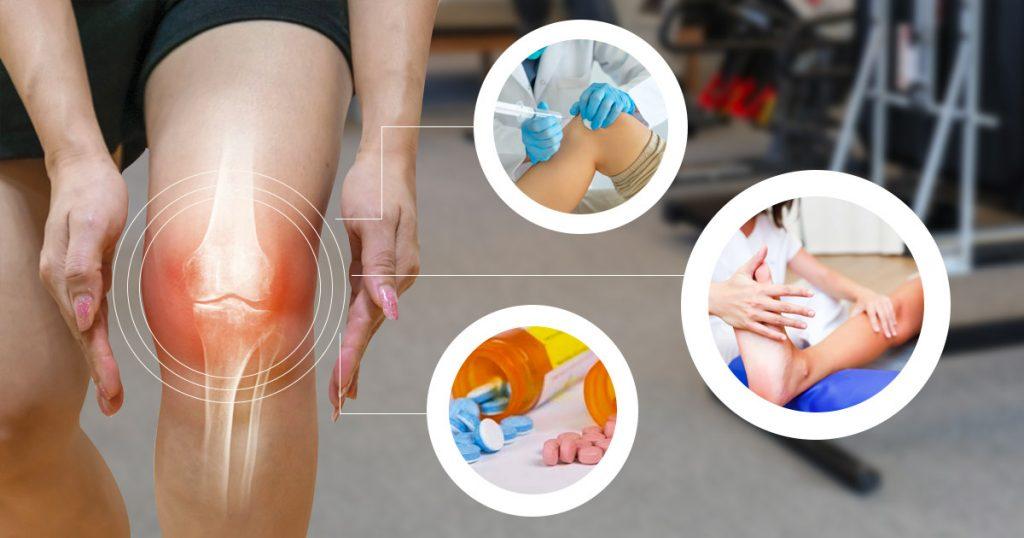When it comes to knee osteoarthritis, finding effective treatments that don’t involve surgery is paramount for many individuals seeking relief from pain and improved mobility. Non-surgical treatments for knee arthritis have gained popularity due to their potential to alleviate discomfort and enhance the quality of life without the risks and recovery associated with surgical interventions.
In this comprehensive guide, we’ll delve into the best non-surgical treatments for arthritic knees, shedding light on the latest advancements and evidence-based approaches that can help individuals manage their knee osteoarthritis effectively.
Understanding Knee Osteoarthritis
Before we proceed to the nonsurgical arthritis treatment for knees, let us first know what knee osteoarthritis is all about. It’s a degenerative joint disease that affects millions of people all over the world. It happens when the protective cartilage that cushions the ends of the bones wears away over time, causing pain, inflammation, and limited movement.
While surgical options like knee replacement surgery are available, non-surgical treatments for knee osteoarthritis have become increasingly sought after due to their potential to provide relief and postpone or even avoid the need for surgery.
What is the Best Non-Surgical Arthritis Treatment for Arthritic Knees?
Here are some of the non-surgical treatments for osteoarthritis:
Physical Therapy & Exercise
One of the cornerstone non-surgical treatments for knee osteoarthritis is physical therapy. Under the guidance of a skilled physical therapist, patients can engage in tailored exercises that aim to strengthen the muscles around the knee joint, improve flexibility, and enhance overall joint stability. Swimming, stationary cycling, and gentle yoga are all low-impact workouts that can help reduce pain and keep joints healthy.
Weight Management
Maintaining a healthy weight is crucial for individuals with knee osteoarthritis. Extra weight puts more pressure on the knee joints, which makes pain and soreness worse. By adopting a balanced diet and engaging in regular exercise, individuals can shed excess pounds and relieve pressure on their arthritic knees, potentially slowing down the progression of the disease.
Orthotic Devices
Orthotic devices, such as knee braces or shoe inserts, can provide additional support to arthritic knees and serve as one of the non-surgical treatments for osteoarthritis. Knee braces help stabilize the joint and reduce pain during physical activities, while shoe inserts can improve the alignment of the lower extremities, distributing weight more evenly and alleviating stress on the knees.
Pharmacological Interventions
Managing the signs of knee osteoarthritis can be done with a number of medicines. Over-the-counter pain relievers like acetaminophen and nonsteroidal anti-inflammatory drugs (NSAIDs) can help relieve pain and lower inflammation. For those who require stronger pain relief, prescription medications may be considered under the supervision of a healthcare professional. This option is known as one of the famous non-surgical arthritis treatments for knees.
Corticosteroid Injections
Are you looking for knee arthritis treatment without surgery? Corticosteroid injections deliver powerful anti-inflammatory medication directly into the affected knee joint, providing temporary relief from pain and swelling. While these injections are not a long-term solution, they can offer significant respite for individuals experiencing acute flare-ups of knee arthritis.
Hyaluronic Acid Injections
Viscosupplementation, which is another name for hyaluronic acid shots, is when a gel-like substance is injected into the knee joint to lubricate and cushion it. This could help reduce pain and make it easier to move. People with mild to moderate knee osteoarthritis benefit most from this treatment.
Platelet-Rich Plasma (PRP) Therapy
PRP treatment is a way to help the body heal itself. A small amount of the patient’s blood is taken, processed to concentrate the platelets, and then injected into the knee joint. The growth factors in PRP can help tissues heal and grow back, which could reduce pain and make joints work better.
Acupuncture
While the scientific evidence is mixed, some individuals find relief from non-surgical treatment for osteoarthritis symptoms through acupuncture. In this old practice, thin needles are put into certain points on the body to help the body’s natural pain-relieving systems work better and to improve the flow of energy.
When is Surgery Necessary for Knee Osteoarthritis?
Surgery for knee osteoarthritis becomes necessary when non-surgical treatments for knee osteoarthritis have proven ineffective or when the condition’s severity hinders an individual’s daily life. Such surgery is considered if non-surgical options, like physical therapy, medications, and injections, fail to relieve pain or improve mobility.
Severe pain, diminished joint stability, extensive structural damage seen in imaging, and advanced disease progression are common indicators for surgical intervention. Surgical approaches include partial knee replacement, total knee replacement, arthroscopy, and osteotomy, each tailored to the individual’s condition and needs.
Deciding on knee osteoarthritis surgery should involve careful consultation with a healthcare provider. It is not the initial recourse and is reserved for situations where the condition has significantly impacted the patient’s daily activities and overall quality of life. Non-surgical methods should be explored thoroughly before considering surgery, which may include total or partial knee replacements, arthroscopy, and osteotomy procedures.
The choice to undergo surgery depends on factors such as pain severity, joint damage, and individual health, emphasizing the importance of personalized medical advice to determine the most appropriate treatment path.
Try Non-Surgical Treatment for Knee Osteoarthritis Now
For individuals dealing with arthritic knees, the best non-surgical treatment for osteoarthritis approach involves a combination of therapies tailored to their specific needs. By incorporating physical therapy, weight management, orthotic devices, medications, and innovative treatments like corticosteroid injections, hyaluronic acid injections, PRP therapy, and even acupuncture, patients can find effective ways to manage pain, improve joint function, and enhance their overall quality of life. It’s important to talk to a doctor about the best non-surgical treatment for knee osteoarthritis based on your unique situation. This way, you can make sure you’re getting a complete and personalized treatment plan.

